#bacteriophages
Explore tagged Tumblr posts
Text
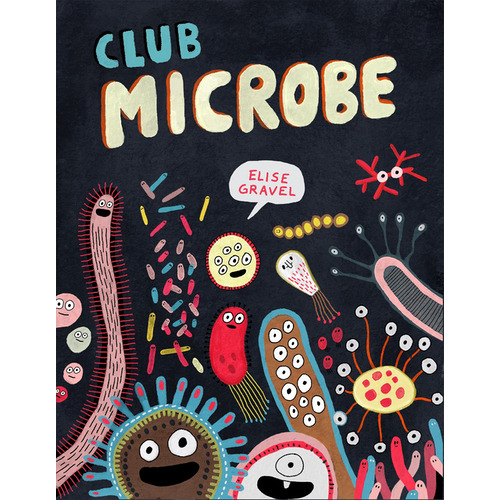

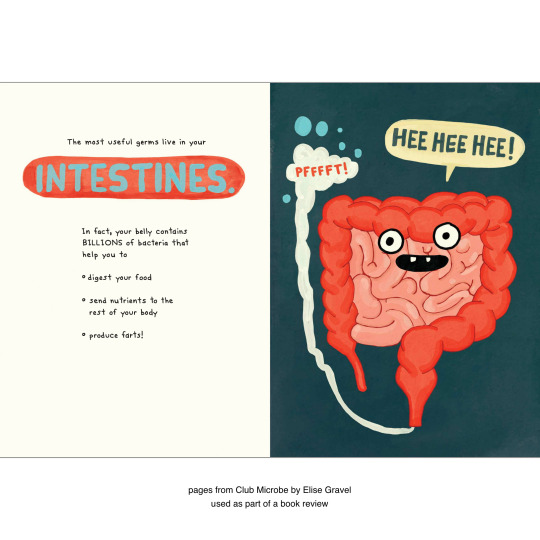
Club Microbe by Elise Gravel. Drawn & Quarterly, 2024. 9781770467026. 56pp. https://www.powells.com/book/-9781770467026?partnerid=34778&p_bt
Every book of Gravel's feels like a party, and this one celebrates microbes by showcasing facts about them and how fun they are to draw. My favorite illustration is the one about useful germs that live in our intestines, which features a toothy grin and a fart. I loved Gravel's enthusiasm for bacteriophages, prochlorococcus ("We're superheroes!"), hand washing, and cool Latin names. The book swept me along and made me want to draw.
If you've never heard Gravel's name, you may recognize her art from the USPS's Message Monsters postage stamps. https://www.painted-words.com/2020/11/elise-gravels-message-monsters-are-among-the-u-s-postal-services-new-stamps-for-2021/
And if her drawings in this book leave you wanting more, check out The Mushroom Fan Club, If Found… Please Return to Elise Gravel (her sketchbook), and my favorite of her books, The Great Antonio.
#bookreview#graphicnovel#graphicnovelreview#kidsgraphicnovel#microbes#bacteria#bacteriophages#drawing
34 notes
·
View notes
Text
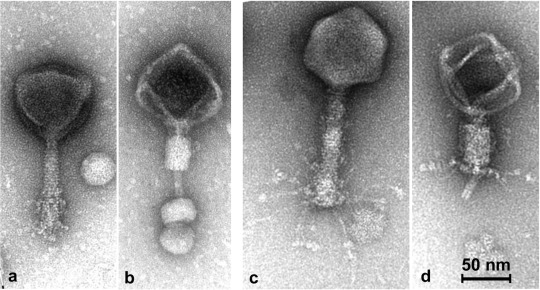
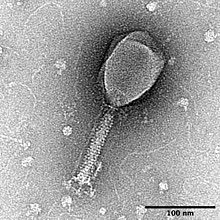

let's fuck this thing
22 notes
·
View notes
Text
I LOVE BACTERIOPHAGESSSSSSSSSSSSSSSSSSSSSS
#my beloveds#GAHHH ALSO THERES SO MUCH RESEARCH THAT CAN STILL BE DONE INTO THEM!! PHD MATERIAL RIGHT THERE!!#BACTERIOPHAGES#BIOLOGY#ARSLKDJFHALSKDJFHLASDKJGFLDKSJGHLDJK I LOVE THEMMMMMMMMMMMMMMMMM
6 notes
·
View notes
Text
Bacteriophages are viruses that infect and kill bacteria by injecting their genetic material into them. When the bacteriophage DNA or RNA takes over the bacterial cell, it produces more bacteriophages and causes the cell to burst open, releasing the new viruses. This is called lysis.
11 notes
·
View notes
Text
Bacteria in the human gut rarely update their CRISPR defense systems
New Post has been published on https://thedigitalinsider.com/bacteria-in-the-human-gut-rarely-update-their-crispr-defense-systems/
Bacteria in the human gut rarely update their CRISPR defense systems


Within the human digestive tract are trillions of bacteria from thousands of different species. These bacteria form communities that help digest food, fend off harmful microbes, and play many other roles in maintaining human health.
These bacteria can be vulnerable to infection from viruses called bacteriophages. One of bacterial cells’ most well-known defenses against these viruses is the CRISPR system, which evolved in bacteria to help them recognize and chop up viral DNA.
A study from MIT biological engineers has yielded new insight into how bacteria in the gut microbiome adapt their CRISPR defenses as they encounter new threats. The researchers found that while bacteria grown in the lab can incorporate new viral recognition sequences as quickly as once a day, bacteria living in human gut add new sequences at a much slower rate — on average, one every three years.
The findings suggest that the environment within the digestive tract offers many fewer opportunities for bacteria and bacteriophages to interact than in the lab, so bacteria don’t need to update their CRISPR defenses very often. It also raises the question of whether bacteria have more important defense systems than CRISPR.
“This finding is significant because we use microbiome-based therapies like fecal microbiota transplant to help treat some diseases, but efficacy is inconsistent because new microbes do not always survive in patients. Learning about microbial defenses against viruses helps us to understand what makes a strong, healthy microbial community,” says An-Ni Zhang, a former MIT postdoc who is now an assistant professor at Nanyang Technological University.
Zhang is the lead author of the study, which appears today in the journal Cell Genomics. Eric Alm, director of MIT’s Center for Microbiome Informatics and Therapeutics, a professor of biological engineering and of civil and environmental engineering at MIT, and a member of the Broad Institute of MIT and Harvard, is the paper’s senior author.
Infrequent exposure
In bacteria, CRISPR serves as a memory immune response. When bacteria encounter viral DNA, they can incorporate part of the sequence into their own DNA. Then, if the virus is encountered again, that sequence produces a guide RNA that directs an enzyme called Cas9 to snip the viral DNA, preventing infection.
These virus-specific sequences are called spacers, and a single bacterial cell may carry more than 200 spacers. These sequences can be passed onto offspring, and they can also be shared with other bacterial cells through a process called horizontal gene transfer.
Previous studies have found that spacer acquisition occurs very rapidly in the lab, but the process appears to be slower in natural environments. In the new study, the MIT team wanted to explore how often this process happens in bacteria in the human gut.
“We were interested in how fast this CRISPR system changes its spacers, specifically in the gut microbiome, to better understand the bacteria-virus interactions inside our body,” Zhang says. “We wanted to identify the key parameters that impact the timescale of this immunity update.”
To do that, the researchers looked at how CRISPR sequences changed over time in two different datasets obtained by sequencing microbes from the human digestive tract. One of these datasets contained 6,275 genomic sequences representing 52 bacterial species, and the other contained 388 longitudinal “metagenomes,” that is, sequences from many microbes found in a sample, taken from four healthy people.
“By analyzing those two datasets, we found out that spacer acquisition is really slow in human gut microbiome: On average, it would take 2.7 to 2.9 years for a bacterial species to acquire a single spacer in our gut, which is super surprising because our gut is challenged with viruses almost every day from the microbiome itself and in our food,” Zhang says.
The researchers then built a computational model to help them figure out why the acquisition rate was so slow. This analysis showed that spacers are acquired more rapidly when bacteria live in high-density populations. However, the human digestive tract is diluted several times a day, whenever a meal is consumed. This flushes out some bacteria and viruses and keeps the overall density low, making it less likely that the microbes will encounter a virus that can infect them.
Another factor may be the spatial distribution of microbes, which the researchers believe prevents some bacteria from encountering viruses very frequently.
“Sometimes one population of bacteria may never or rarely encounter a phage because the bacteria are closer to the epithelium in the mucus layer and farther away from a potential exposure to viruses,” Zhang says.
Bacterial interactions
Among the populations of bacteria that they studied, the researchers identified one species — Bifidobacteria longum — that had gained spacers much more recently than others. The researchers found that in samples from unrelated people, living on different continents, B. longum had recently acquired up to six different spacers targeting two different Bifidobacteria bacteriophages.
This acquisition was driven by horizontal gene transfer — a process that allows bacteria to gain new genetic material from their neighbors. The findings suggest that there may be evolutionary pressure on B. longum from those two viruses.
“It has been highly overlooked how much horizontal gene transfer contributes to this dynamic. Within communities of bacteria, the bacteria-bacteria interactions can be a main contributor to the development of viral resistance,” Zhang says.
Analyzing microbes’ immune defenses may offer a way for scientists to develop targeted treatments that will be most effective in a particular patient, the researchers say. For example, they could design therapeutic microbes that are able to fend off the types of bacteriophages that are most prevalent in that person’s microbiome, which would increase the chances that the treatment would succeed.
“One thing we can do is to study the viral composition in the patients, and then we can identify which microbiome species or strains are more capable of resisting those local viruses in a person,” Zhang says.
The research was funded, in part, by the Broad Institute and the Thomas and Stacey Siebel Foundation.
#acquisition#ADD#Analysis#author#Bacteria#bacteriophages#Biological engineering#Broad Institute#cell#Cells#Civil and environmental engineering#Community#Composition#CRISPR#datasets#defense#defenses#Design#development#Diseases#DNA#engineering#engineers#Environment#Environmental#enzyme#factor#Food#form#Foundation
1 note
·
View note
Text
Unexpected beauty, major antimicrobial power boost as phages form into surprising flower shapes
A group of McMaster researchers who routinely work with bacteriophages – viruses that eat bacteria – had a pleasant and potentially very important surprise while preparing slides to view under a powerful microscope. After treating samples of what are informally called phages so they could be viewed alive under an electron microscope, the researchers were surprised to see they had joined together…
0 notes
Text
youtube
You’ve got trillions of viruses inside you – right now! But these aren’t the viruses you fear. Some of them are your body’s secret protectors, keeping deadly bacteria in check and even killing cancer cells. But what happens when they turn against you? Let's look at the wild world of the human virome.
0 notes
Text

me and my bacteriophage friends on our way to wreak havoc on your gut health by injecting ourselves into your good bacteria
7K notes
·
View notes
Note


Spent a time obsessed with bacteriophages. The result was that. Thought you might like it. It’s soft.
you're right i absolutely love this thang
3K notes
·
View notes
Text

Revival of a Wonder Drug: The Remarkable Comeback of an 80-Year-Old Antibiotic Against Resistant Bacteria. The discovery of antibiotics in the early 20th century revolutionized medicine and helped save countless lives.
0 notes
Text
April 2023 in Review
I made several posts with numbers on crime, suicide, and poverty. The U.S. is a violent, unequal country. I’ve talked about these issues a lot, so far without any noticeable effect on our political class. So I’ve picked some other things below. Most frightening and/or depressing story: Chemicals, they’re everywhere! And there were 20,000 accidents with them in 2022 that caused injuries,…
View On WordPress
0 notes
Text
OKAY BUT ALSO THE FACT THAT WE KNEW ABOUT PHAGES *BEFORE* WE HAD ANTIBIOTICS! LIKE THIS STUFF IS OLDER THAN ANTIBIOTICS! IF ONLY WE HADNT BEEN AFRAID TO INJECT PEOPLE WITH THE INVISIBLE CELL KILLING POTION!
#ofc the last sentence is a bit exaggerated and not entirely scientifically accurate (they only kill bacteria)#BUT STILL I FIND THIS SO FUNNY#we know so much more ab them now btw#also possibly safer than antibiotics - they are super specific to bacterial cells whereas antibiotics kill a wide range of bacteria!#including the ones that are really really good for you!#bacteriophages
5 notes
·
View notes
Text


microscopic friends
(tardigrade design by @crazysodomite !)
#femurs art#furry#sfw furry#bacteriophage#yeast#tardigrade#these are very divorced from what a furry is but thats ok becasue i love to have fun and im counting this as anthros anyway#the yeast is based off of shmoos (the reproduction method of yeast not the. little white things)#weirdfur#furry art
885 notes
·
View notes
Text
It's still so weird to me that this is what a bacteriophage actually looks
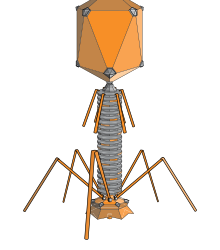
Like, tf do you mean it's not just a diagram, and it really looks like this

#bacteriophage#microbiology#biology#studyblr#study motivation#studyspo#study#student#studyspiration#romanticise studying
1K notes
·
View notes
Text
I would like to introduce you to my languages name for our favorite bacteria eating virus

307 notes
·
View notes
Text

hershey and chase (1952)
222 notes
·
View notes